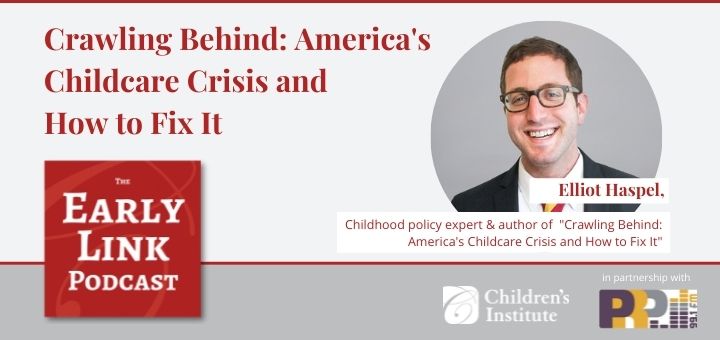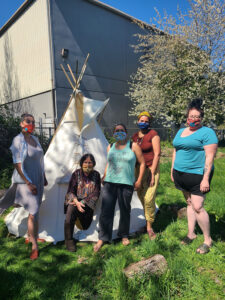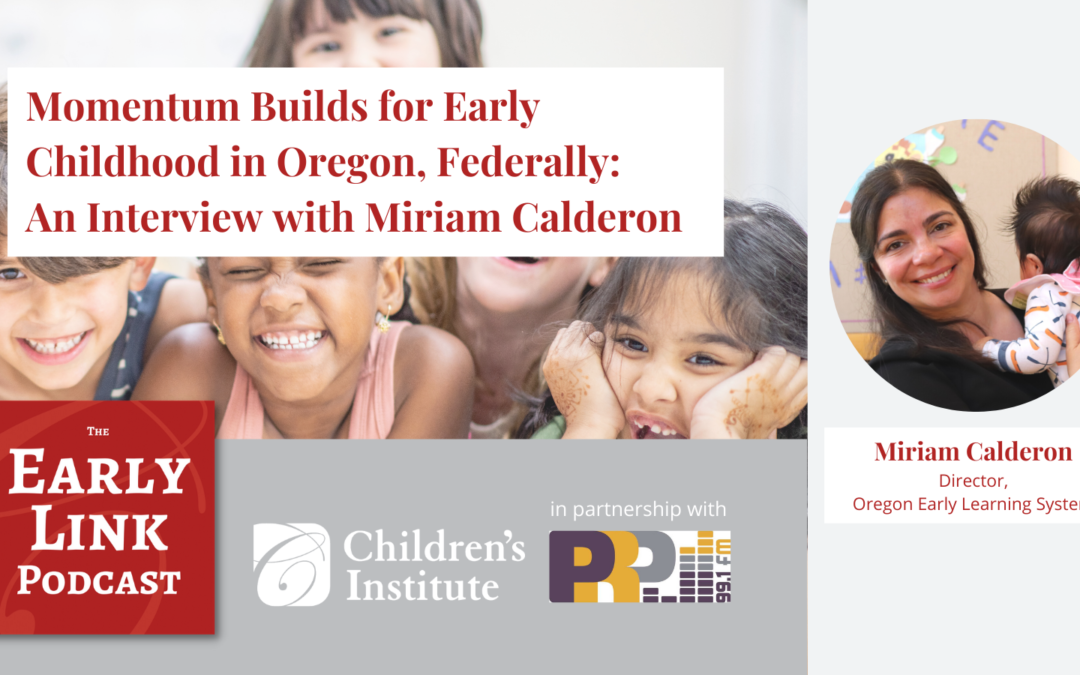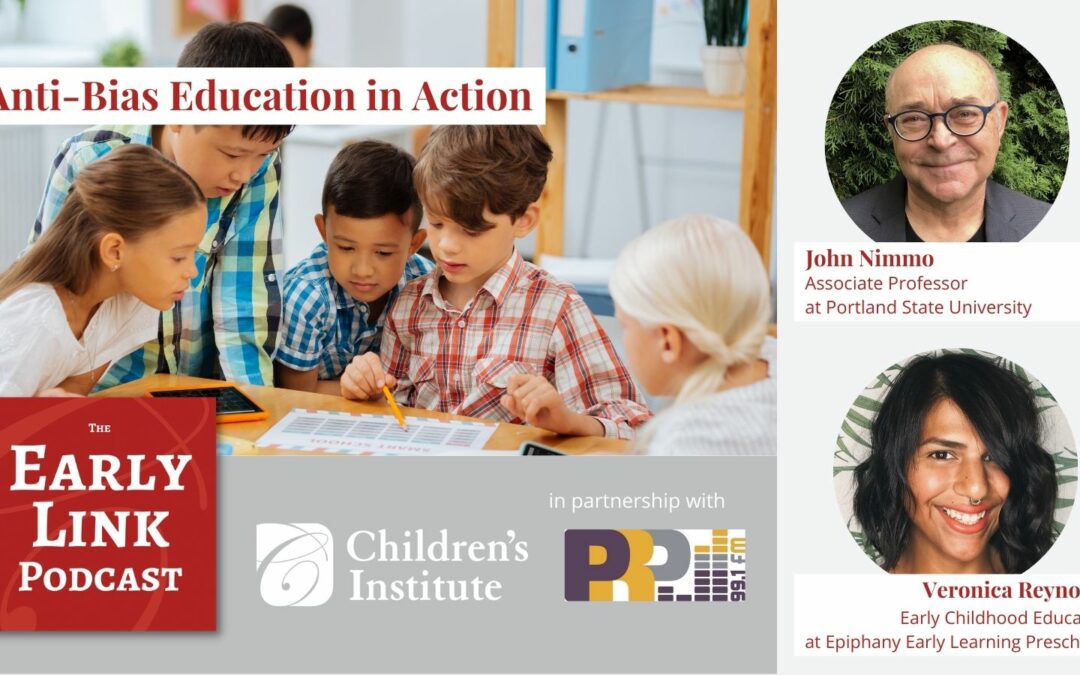
Crawling Behind: America’s Child Care Crisis & How to Fix It with Elliot Haspel
On this episode of The Early Link Podcast, host Rafael Otto speaks with Elliot Haspel, an early childhood policy expert and author of the book “Crawling Behind: America’s Childcare Crisis and How to Fix It.”
Guest:
Elliot Haspel is a nationally-recognized early childhood policy expert and author of the book “Crawling Behind: America’s Child Care Crisis and How to Fix It.” Elliot’s work has been featured in The New York Times, The Atlantic, and The Washington Post, among other mediums. Elliot is a program officer at a philanthropic foundation in Richmond, Virginia.
Summary:
Elliot describes what the child care crisis looks like today and talks about what has (and has not) changed since his book was released in 2019. He discusses the impact of COVID-19 on an already fragile system and provides historical background on the constellation of issues facing a functioning child care system. Elliot also breaks down the economic return on investing in free, universal child care and describes the goal of Child Care NEXT, a grant program to support transformational change in five states’ child-care systems. Finally, Elliot emphasizes the importance of focusing on racial equity when working towards an effective child care system for all.
Additional Reading
Crawling Behind: America’s Child Care Crisis and How to Fix It
36 States Enter National Pool for Child Care NEXT Transformation Grants
Transcript
Rafael Otto: [00:00:00] This is the Early Link Podcast. I’m Rafael Otto. As usual, you can catch us on the airwaves on 99.1 FM in Portland on Sundays at 4:30 PM or subscribe and listen wherever you find your podcasts. Today, I’m speaking with Elliot Haspel, who is a nationally recognized early childhood policy expert and author of the book “Crawling Behind: America’s Childcare Crisis and How to Fix It.”
Elliot’s work has been featured in The New York Times, The Atlantic, and The Washington Post among other places. And he is a program officer at a philanthropic foundation in Richmond, Virginia. Elliot, welcome! It’s great to have you on the podcast today.
Elliot Haspel: [00:00:35] Thanks so much for having me.
Rafael Otto: [00:00:38] I wanted to start by talking to you about your book, which came out in 2019, and it takes a look at the child care crisis in the country. I know things have changed, or I’m hoping they’ve changed a little bit, since 2019, but maybe not enough. But can you talk about the crisis and sort of where we are today? Paint the picture for us.
Elliot Haspel: [00:00:57] Yeah. Yeah. I mean, it’s been an eventful year-and-a-half since the book came out. So the child care crisis in the US is still raging. It’s just the contours look a little bit different now than they did back in 2019. So what is described as a child care crisis is the fact that child care is largely unaffordable, inaccessible, of questionable quality, and is a sector where practitioners are getting paid miserably low wages.
So it’s not working for anyone. There’s no part of it that… no one is benefiting from the system. It’s not working for parents. It’s not working for providers. It’s not working for businesses and it’s not working for kids. And a lot of that has historical roots going all the way back to the founding of the country and going through our history. But what’s happening right now, you know, the pandemic really brought the hammer down on an already fragile industry. So, you know, where the beginning of the pandemic, when all the child care programs had to basically close, except for those that were serving the children of healthcare workers and other frontline workers. It was an existential crisis because the way we treat child care in this country, we treat child care programs more like restaurants than we do like public schools or libraries. And what that means is they need paying customers to stay in business. And all of a sudden the customers were gone. There were surveys coming out, which I think were accurate, that without any kind of government assistance, we would lose half of the child care programs in the country.
Rafael Otto: [00:02:27] Right.
Elliot Haspel: [00:02:28] Now there were some trials, some government assistance with the CARES act, and you know, the PPP loans, all those things, were able to kind of keep the sector afloat during the worst of the pandemic. And then the American Rescue Plan, the December stimulus combined for about 49 billion dollars which is truly a historic investment in child care.
So the sector has been stabilized. The devastation that we were facing didn’t come to pass because we were able to glue it together with assistance. But now there’s this sort of additional knock-on crisis, which is child care programs are having a huge trouble finding staff.
So, while we’ve heard of labor issues across the country. In child care, it is particularly bad because there are mandated child to adult ratios, right? That means that if you don’t have enough teachers, you just can’t open all the classrooms you otherwise would be able to.
That’s becoming more of a problem as the median wage for child care workers is about $11.65/hr. Other industries, fast food, retail, you know, are raising their wages, they’re offering better benefits. Child care programs have no ability to just take a little bit less profit and make that up cause they weren’t making any real profit to begin with.
So, yeah, we’re really in a moment where it’s sort of been crisis after crisis after crisis.
Rafael Otto: [00:03:42] Can you talk a little bit about the historical background. I know you said going all the way back to the founding of the country, and a little bit more recently, we could point to maybe some progress that had been starting to get made in the sixties and the seventies. And that was held up.
Can you talk a little bit about the history that is informing the current crisis today?
Elliot Haspel: [00:04:01] Yeah.
So to begin with, you can’t separate out understanding American child care from understanding how ambivalent America has been about mothers of young children working. For the first child care, sort of external child care that existed in the country, came in two forms, right?
One were enslaved women who were forced to care for the children and their enslavers. And the second was sort of these charities set up basically as holding pans for kids of widowed mothers, or truly like, destitute mothers who had no choice but to go and work, you know, in the late 1800s. We’ve never really shaken out of that.
There has always been sort of this reluctance, or exploitive, you know, system, that we’ve never sort of embraced the idea, even though we espouse gender equity these days, this idea that women and mothers should be able to go and work outside the home if they want to, and they should have viable high quality care options available to them so that they can do that.
Or if they don’t, if they want to work part-time, whatever the situation that they want, they should be empowered. We’ve never acted that out. We have a child care system that really rests on a welfare frame. You mentioned the sixties and and the seventies and there was this moment in that 1971 Congress passed the comprehensive child development act, which would have created much more of a nationally or federally funded child care system.
But it was vetoed by president Nixon, in pretty strong language and really, putting the kind of stake in the ground that the federal government should not be involved in the family. Right? And so it really cemented this idea that child care is a family responsibility, it’s not a societal responsibility and the ghosts of ‘71 continue to haunt us to today.
Please download the full transcript below.


 The idea to use a portion of the land for the learning landscape started more recently and grew from the desire to create a community gathering space designed for everyone, from young children to elders in the NAYA community.
The idea to use a portion of the land for the learning landscape started more recently and grew from the desire to create a community gathering space designed for everyone, from young children to elders in the NAYA community. 
 Inside the learning landscape, children can explore a multisensory environment. This teaches risk benefit instead of risk management, and that promotes internal control, self-governance and self-discipline.
Inside the learning landscape, children can explore a multisensory environment. This teaches risk benefit instead of risk management, and that promotes internal control, self-governance and self-discipline. On the day I visited, Lukas Angus was continuing the work of carving a canoe for the space, one that would work on the water if desired but would also be for children to play with and learn from. “A canoe this size was used historically to gather food. This one uses a Nez Perce shape and design,” Angus said. “This dugout style canoe was not especially elegant or seaworthy, but was used to harvest
On the day I visited, Lukas Angus was continuing the work of carving a canoe for the space, one that would work on the water if desired but would also be for children to play with and learn from. “A canoe this size was used historically to gather food. This one uses a Nez Perce shape and design,” Angus said. “This dugout style canoe was not especially elegant or seaworthy, but was used to harvest Qamar’s son played in the gravel and built what looked like a small city with shells and stones. At one point he moved to the canoe, playing with the fresh shavings from Angus’s work. Her younger son slept in the hammock in the shade of the Cottonwood trees. Eyes closed, dreaming perhaps, he unknowingly represented the first generation to grow in this new space in love and light.
Qamar’s son played in the gravel and built what looked like a small city with shells and stones. At one point he moved to the canoe, playing with the fresh shavings from Angus’s work. Her younger son slept in the hammock in the shade of the Cottonwood trees. Eyes closed, dreaming perhaps, he unknowingly represented the first generation to grow in this new space in love and light.

